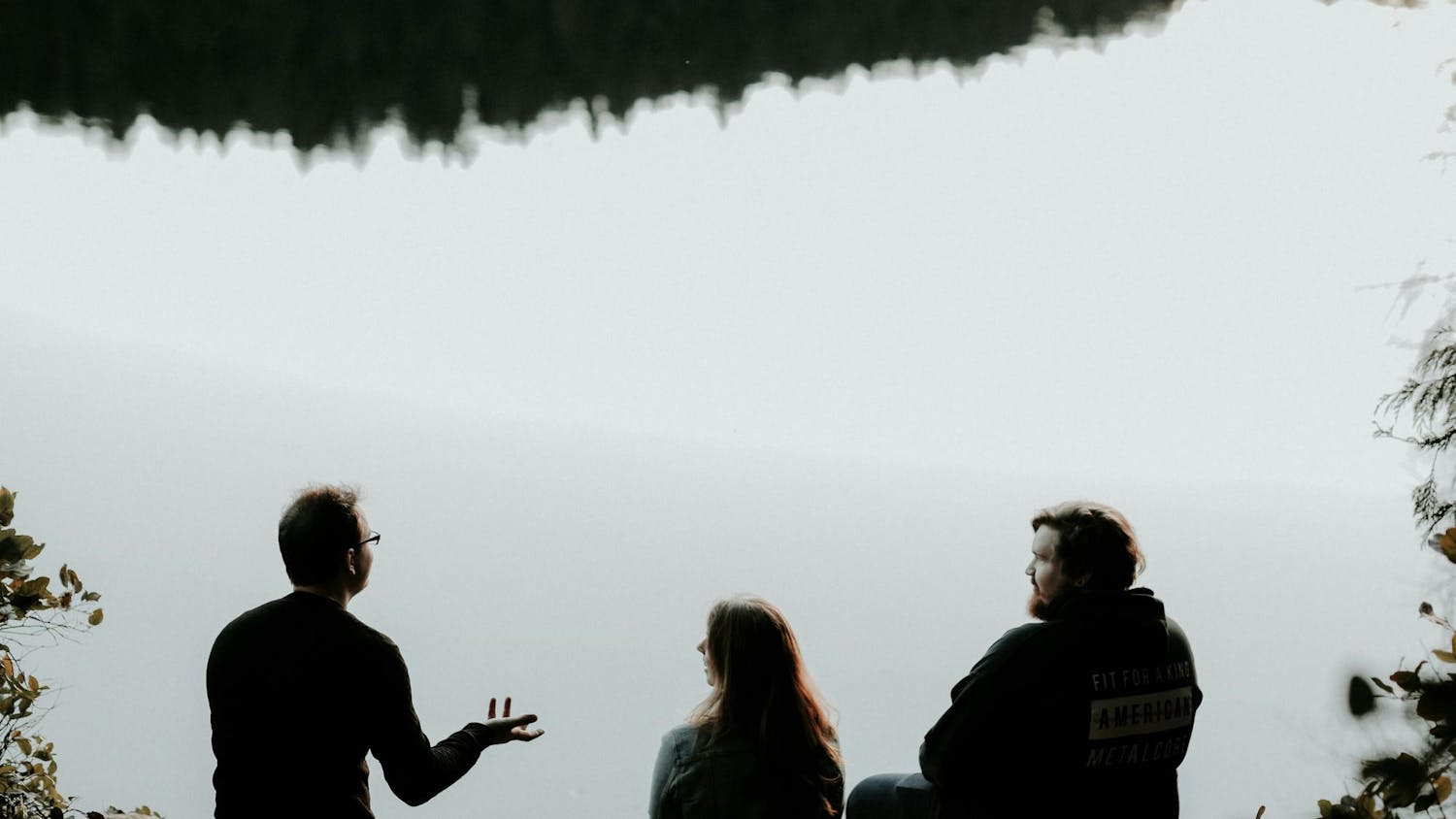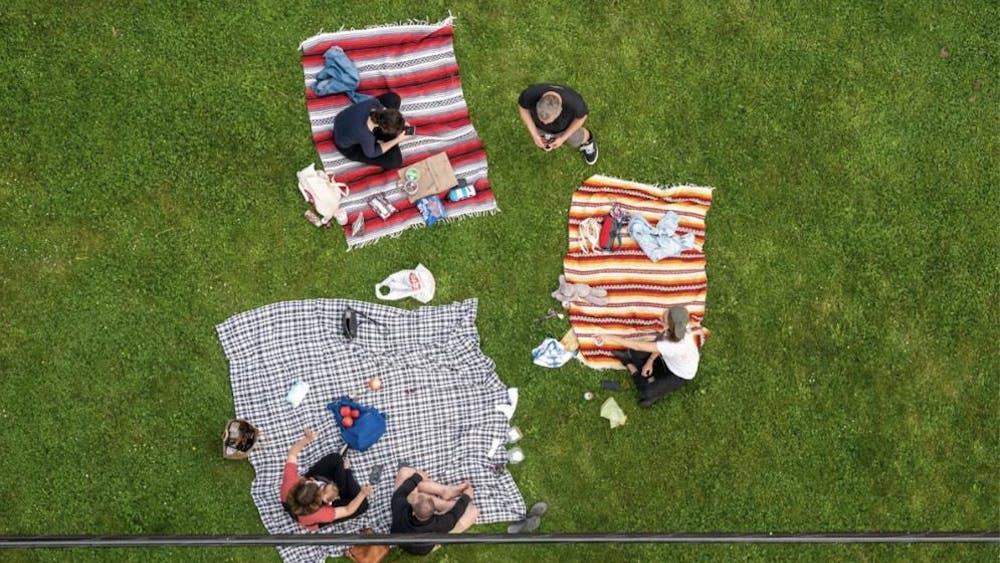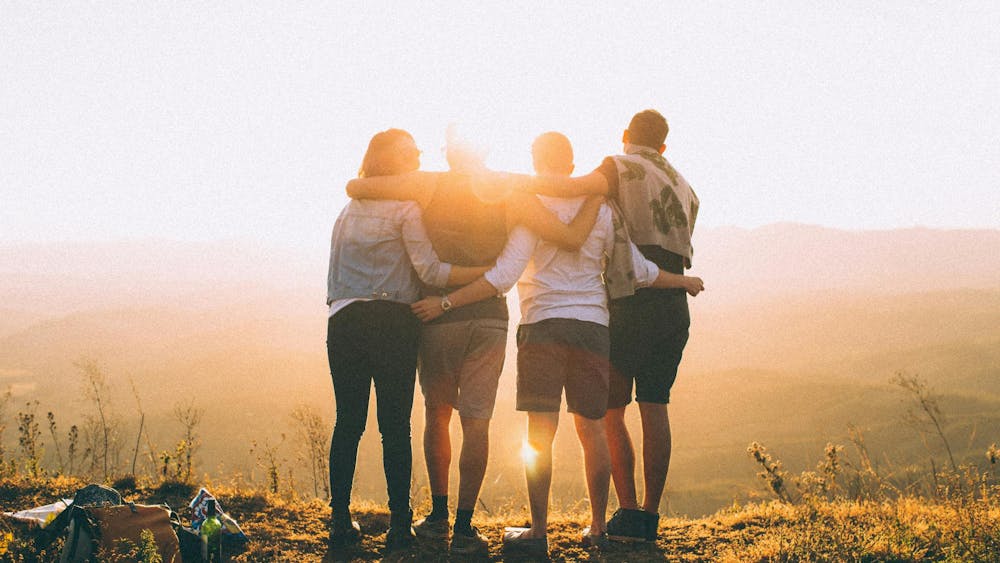Everyone in the Notre Dame is well aware of the University’s French heritage and Irish identity. However, although Notre Dame has a rich history with Native Americans, few members of the campus community know or can recount these stories.
Three prominent murals on the second floor of Main Building depict Christopher Columbus and his interactions with Native American peoples. One, called “Taking Possession of the New World,” shows him just after landing, in front of a cross, preaching Christianity to awestruck indigenous people cowering at the display of power. Another, called “Return of Columbus and His Reception at Court,” shows him back in Spain presenting his findings from the New World, including a number of Native American men. The final mural, called “Bobadilla Betrays Columbus,” shows Columbus in shackles with a concerned Native woman resting her head on his shoulder while a Native man holds Columbus’s chains. Columbus was arrested by fellow Spaniard, Francisco de Bobadilla, by orders of the King and Queen for abusing his powers as a governor, promoting slavery of the indigenous people, ordering wrongful hangings and mishandling money.
It is unfortunate that these are the only stories still told about Native Americans on Notre Dame’s campus. The story that should be told and celebrated instead is the story of the Potawatomi tribe, Chief Leopold Pokagon, Fr. Stephen Badin, Fr. Edward Sorin and the origins of the University as we know it.
Most people do not know that Notre Dame was built on Potawatomi lands. The story of Notre Dame and the Potawatomi people began in 1830 when Leopold Pokagon, a leader in the Potawatomi tribe, traveled to Detroit to ask assistance from French priests. Fr. Gabriel Richard sent Badin, the first priest ordained in the United States, as a missionary to minister to the Potawatomi people. Badin purchased the land at Sainte-Marie-des-Lacs in parcels from the United States government with the intention of starting an orphanage — now Notre Dame. The Potawatomi and Badin worked together to establish a mission in Northwest Indiana.
When the Chicago Treaty was passed in 1833, the Potawatomi tribe was ordered to leave or be forcibly removed from this region to eastern Kentucky. Pokagon, with the help of Badin, was able to negotiate the right to stay in the area, and he purchased land near Dowagiac, Michigan, for his people shortly thereafter. With the help of Catholic missionaries, the Pokagon Band of Potawatomi got its start.
In 1835, Badin sold the land to the Diocese of Vincennes on the condition that it be used for an orphanage and school. Sorin left Vincennes, Indiana, with the dream of founding a university, and when he arrived at the log-cabin mission on the edge of two lakes in November 1841, the Pokagon people and Catholic priests had already formed a strong friendship. The Pokagon band maintained a close presence during the formative years of Notre Dame.
This friendship continued throughout Notre Dame’s development, but over time this relationship has slowly faded away. There have been points of contention between the Potawatomi tribe and Notre Dame in recent years concerning land and the admission of Potawatomi students to the University, but those concerns have passed. There is no reason that Notre Dame should avoid celebrating its long tradition with the Native American people in this region. There is no reason why the Notre Dame community should be unaware of important interactions between its founders and local Native Americans.
It is unfortunate that during November, Native American Heritage month, Notre Dame does nothing to honor its past. For an institution so steeped in stories and practices of tradition, it is disappointing that this integral story has been forgotten. In celebrating Father Sorin’s 200th birthday, Notre Dame ought to include the great Native American influence involved in the founding of this University.
This story needs to be told and heard so that in the future, we can honor our past to the fullest extent.













